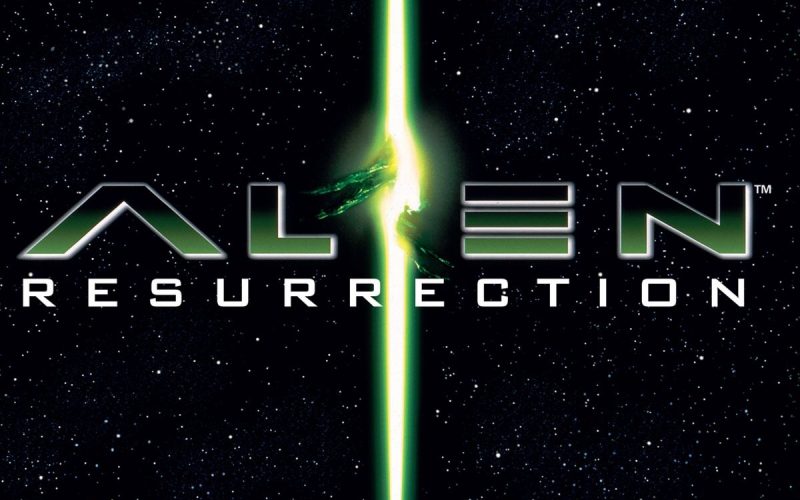Alien: Resurrection (1997).
A Cautionary Tale on the Dangers of Cloning.
Whatever you may think of the somewhat divisive Alien³, it certainly brought the story of Warrant Officer Ellen Ripley to a close as she sacrificed herself to rid the universe of the deadly Xenomorph threat once and for all. Be that as it may, in 1996 the powers that be at 20th Century Fox Studios decided that they wanted to make a fourth film in the Alien franchise.
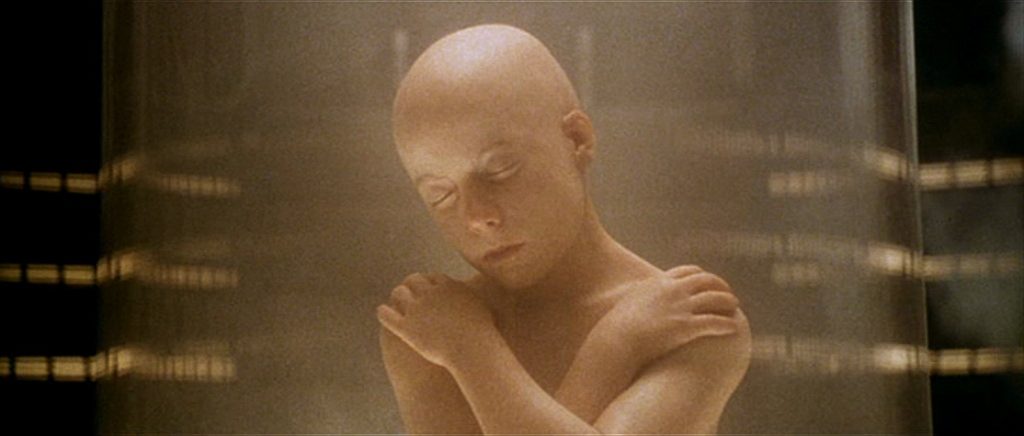
The studio approached a young Joss Whedon to write a treatment for the fourth instalment. Fox’s one caveat to Whedon was that Sigourney Weaver would have to star once more. Tasked with the difficult job of bringing her back from the dead whilst maintaining the continuity of the previous three films, Whedon devised a clever plot device that would allow the film to be a logical progression of Alien³. In the first three films, Weyland-Yutani, usually referred to as “the company”, were desperate to get their hands on the titular creature. In the fourth film the company are no more as the story is set 200 years after the events of Alien³, although the same sort of powers that be are present in the form of United Systems Military, and this time, from the outset, they finally have their hands on the creature.
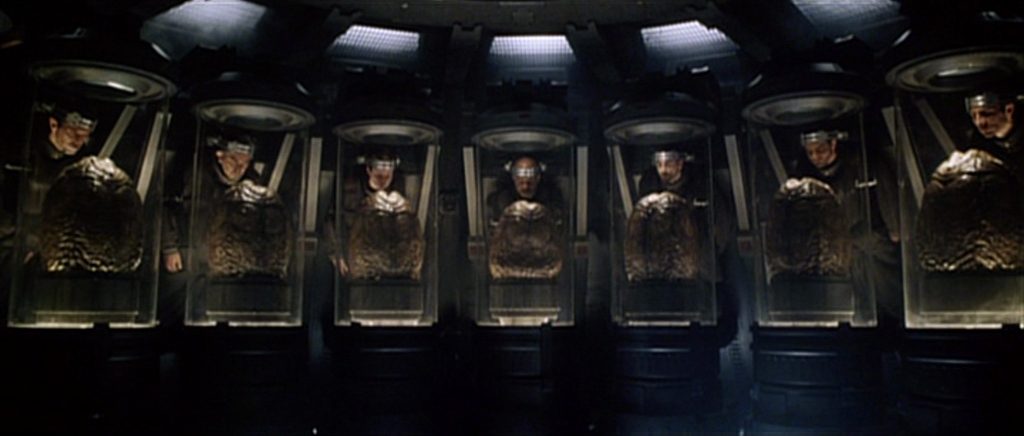
The clever plot device that Whedon devised that would allow Ripley’s resurrection was that USM had successfully cloned her from a blood sample that Weyland-Yutani had recovered from Fiorina “Fury” 161, the planet in Alien³, which had then been put in cold storage. As Ripley had been under the care of that colony’s medical officer, Clemens, it made sense that such a sample would exist. What was so crucial was that at the time the sample would have been taken, Ripley had already been impregnated by her nemesis and was carrying a queen inside her. Conceivably her blood sample would have carried the queen’s DNA and so USM were able to remove the queen embryo from the newly cloned Ripley and therefore obtain the prize that had for so long eluded Weyland-Yutani. Whedon certainly deserves credit for his ingenuity in this regard. It’s a undeniably clever way to resurrect Ripley and illustrates Whedon’s intimate knowledge of the previous films in the series.
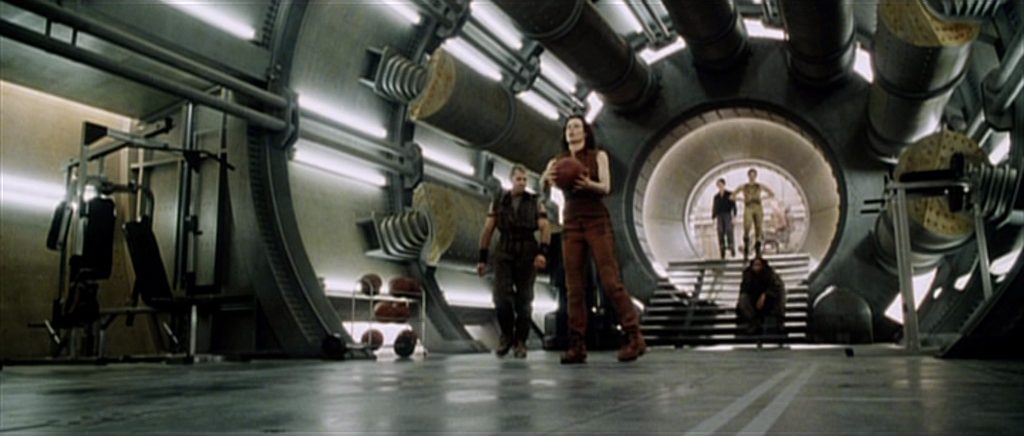
And so with their script in place, Fox sought a director and hired Frenchman, Jean-Pierre Jeunet. Like the previous three directors of the Alien series, Jeunet would bring a very strong and unique visual style that would, for the most part, complement that of the previous three films. So with a clever script, the series’ star returning, a healthy $75 million budget and a potentially capable director on board, Alien: Resurrection was set to become a worthy continuation of the saga. So, what went wrong?
Alien: Resurrection is certainly for me and the vast majority of the series’ fans I’ve spoken to, the low point of the original four film saga. It certainly starts off well with good use of Newt’s “monsters” line from Aliens and composer John Frizzell reusing familiar music cues from Jerry Goldsmith’s stunning score from the original 1979 film.
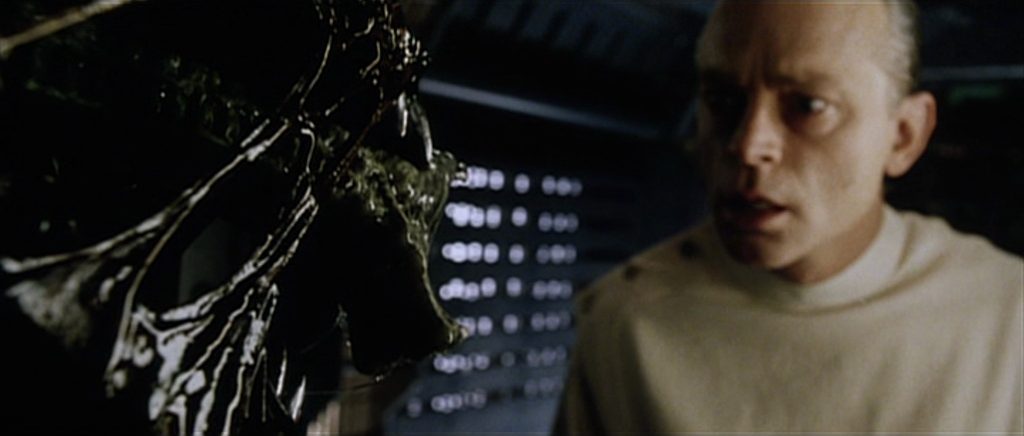
After the queen embryo is removed from the cloned Ripley we see the first of many visual oddities that seem to represent Jeunet’s off-kilter style and seem to be used because they look interesting but make little sense otherwise. The first being the bizarre mesh thing that Ripley finds herself in when she recovers from the surgery. If it’s supposed to represent the skin shedding abilities of the Xenomorph then it fails as it looks like Ripley’s been placed in a large, thin fabric sack that lacks any organic qualities. We’re just supposed to take it as given but the Alien universe that Ridley Scott created and that James Cameron respectfully progressed with Aliens was one that favours function over aesthetics and that’s something that Jeunet seems to have little regard for here.
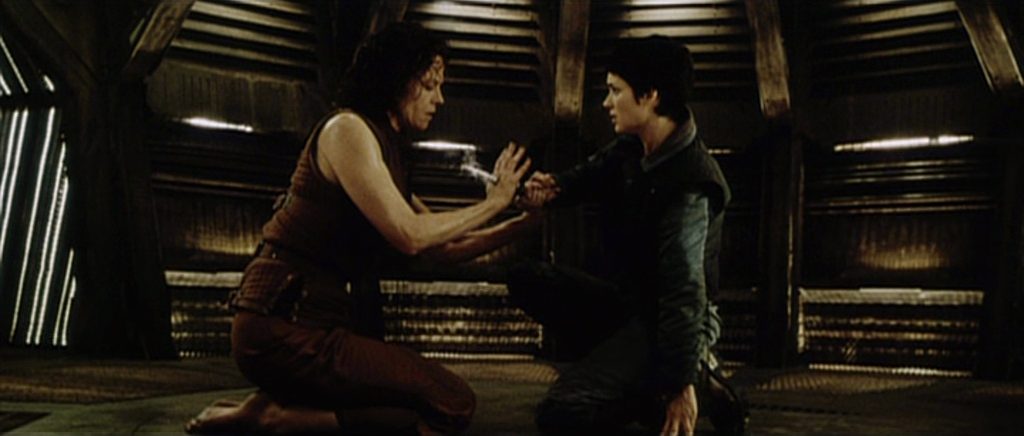
From early on and throughout the film we are subjected to some often woefully over the top acting from many of the cast namely Dan Hedaya, the film’s biggest culprit and to a lesser extent, J.E. Freeman, Brad Dourif, and Ron Perlman. When compared to the flawless acting of the first film, the cast in Alien: Resurrection, on the whole, can’t hold a candle to even the third film with regard to the quality of their performances let alone the first two films.
There is the one obvious exception. Sigourney Weaver is superb once more and is given the rare opportunity to put a more sinister slant on her portrayal of a version of Ripley that isn’t entirely human. She delivers much of her dialogue with a gleeful relish which makes for an interesting twist on what we’ve seen from her in the previous three films. This version of Ripley is also somewhat devoid of delusions of morality (Ash would be proud of her) which gives her yet another added dimension.
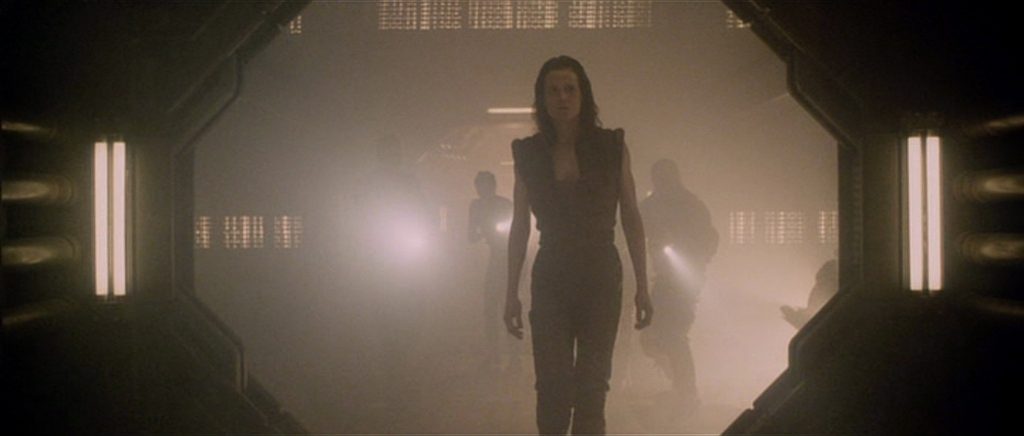
Any positive aspects of the plot are sadly hamstrung by a rather inept script. This really is by the numbers stuff when taken in context with the series as a whole and it’s full of cliched and rote dialogue. Some of Perlman’s lines are particularly cringeworthy.
On a more positive note, one scene that stands out is the terrifying underwater segment that will have you gasping for breath. The submerged set was made all the more unpleasant for the cast and crew when the milk powder that had been added to give the water a murky look started to turn causing some sickness amongst the already strung out actors. Given the notoriously difficult challenge that underwater filming can pose, especially a scene with that many actors, this is a technically brilliant piece of filmmaking and is the one truly memorable scene in the film.
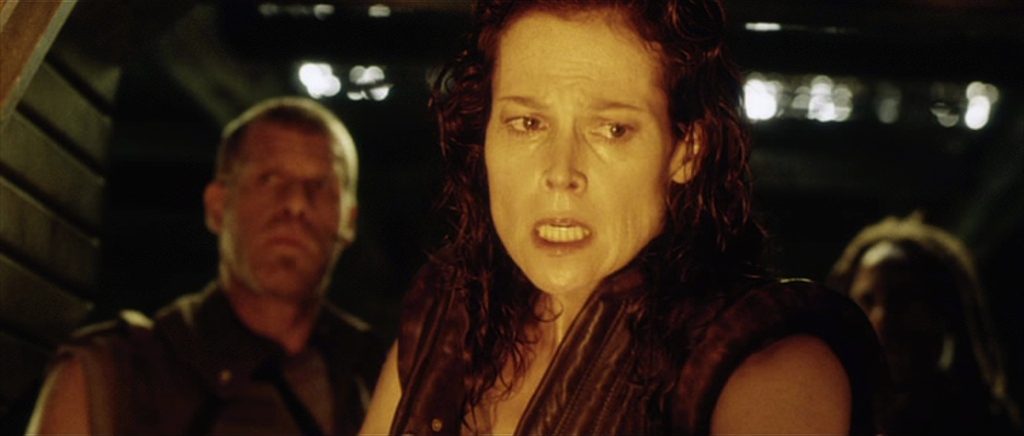
The rest of the film, after the Aliens have predictably escaped and are running amok on the ship, becomes standard fare and holds few surprises. Some of the alien effects are certainly very convincing. Practical effects are employed for the majority of closeup shots with CGI being used for some full body shots and the creatures certainly look as convincing as they ever have before. Of particular note is the way the Xenomorphs swim underwater, their fluid and almost graceful movement having a creepy quality that adds to the overall terror of that particular scene.
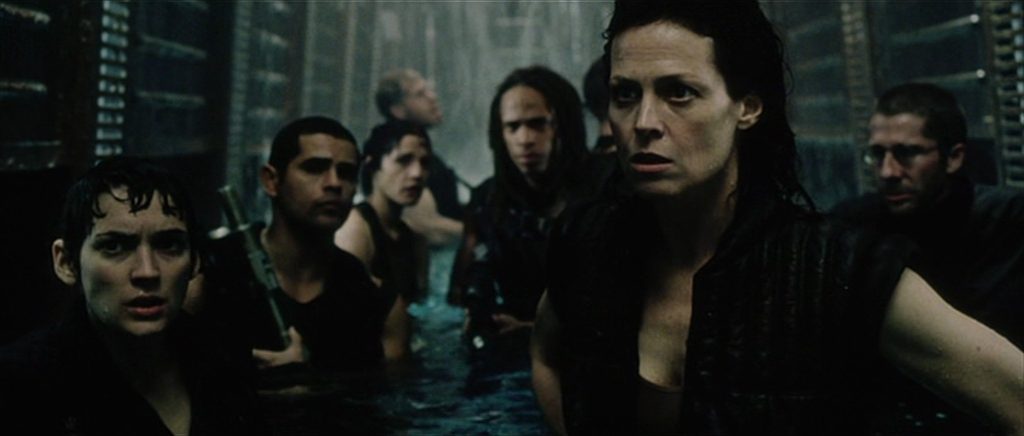
Where the film truly falls apart is in its final act with its pregnant Alien Queen and the subversion of the previously established Alien life cycle and the resultant offspring. The appearance of the Alien Newborn, a sort of bizarre, bastard child borne of the Alien Queen and Ripley, is beyond laughable in its grotesque absurdity and flushes away any vestiges of credibility this sequel may have had. It’s awkward design is reminiscent of a cross between man and alien, unfortunately not one as superbly conceived as the Aliens that we’re used to seeing in these films. And to make things worse it’s as if said crossbreed had been moulded out of that white dog poo that you used to see when dogs had a higher proportion of bone meal in their diets and said stool had been allowed to dry out. If you’re over 35 then you’ll know what I’m referring to.
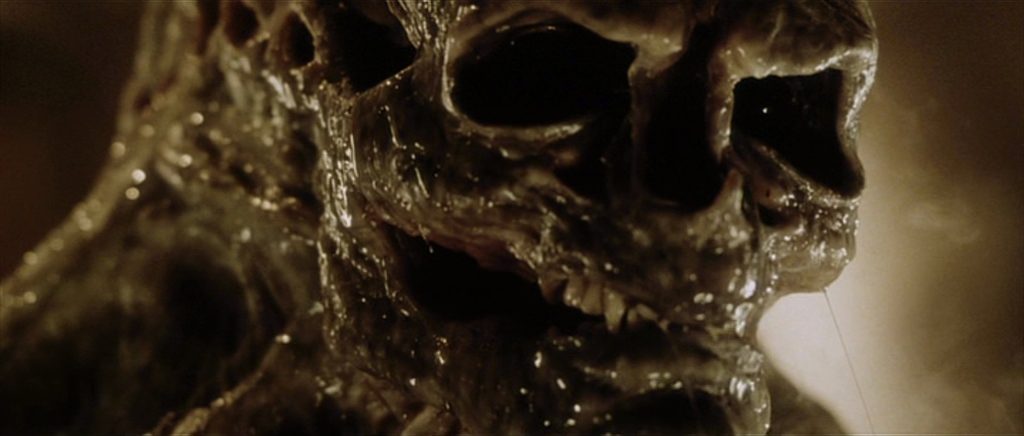
I’ve little more to say about Alien: Resurrection really. Is it as bad a film as my score suggests? I’d say that when you compare it to the first three films and in particular Alien and Aliens, then it’s a fair appraisal as its nowhere near worthy to be part of the legacy of those undeniable classics. Alien: Resurrection is a by the numbers and unnecessary sequel that’s hampered by an ultimately lame script, some poor casting and performances and a quirky, off-kilter tone that doesn’t fit in with the tone established by the three preceeding films which appears to be mostly attributable to the style and sensibilities of its director.
Alien: Resurrection was far from being the end of the Alien saga. We would see the Xenomorphs twice more in the less than stellar but fairly inoffensive AVP: Alien vs. Predator (2004) and it’s far poorer 2007 sequel Aliens vs. Predator: Requiem, a film that for many is the nadir of the series. In 2012, Ridley Scott would himself return to the franchise he kick-started with the flawed but visually stunning prequel Prometheus and again in 2017 with the disappointing and muddled follow-up prequel, Alien: Covenant.
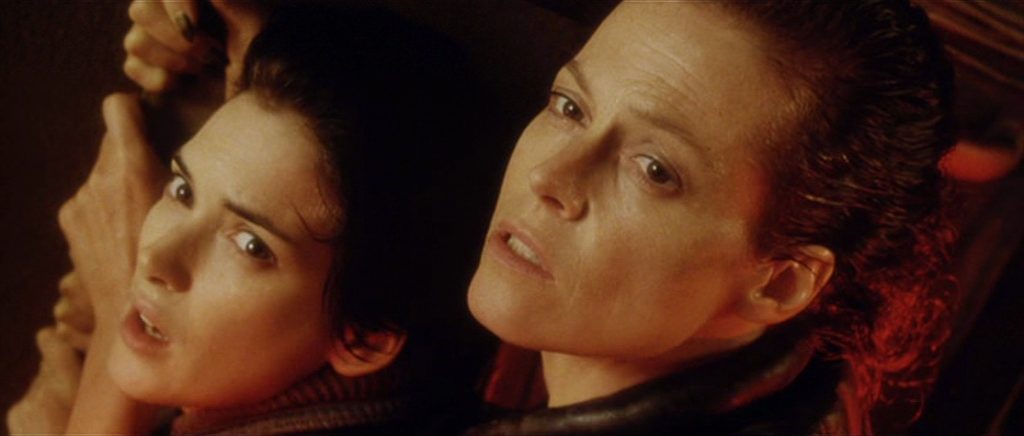
From Alien: Resurrection onwards the series would unfortunately never again attain the heights of the first and second films in the long-running franchise. Whilst the fourth film benefits from having Weaver front and centre, in terms of its tone, it feels very much like one of the innumerable by-the-numbers ‘90s sci-fi/horror films that were so ubiquitous throughout the second half of that particular decade. It has its fans and isn’t a film completely devoid of merit but overall is a genetically inferior clone of it’s far superior forbears.
Film ‘89 Verdict – 5/10

